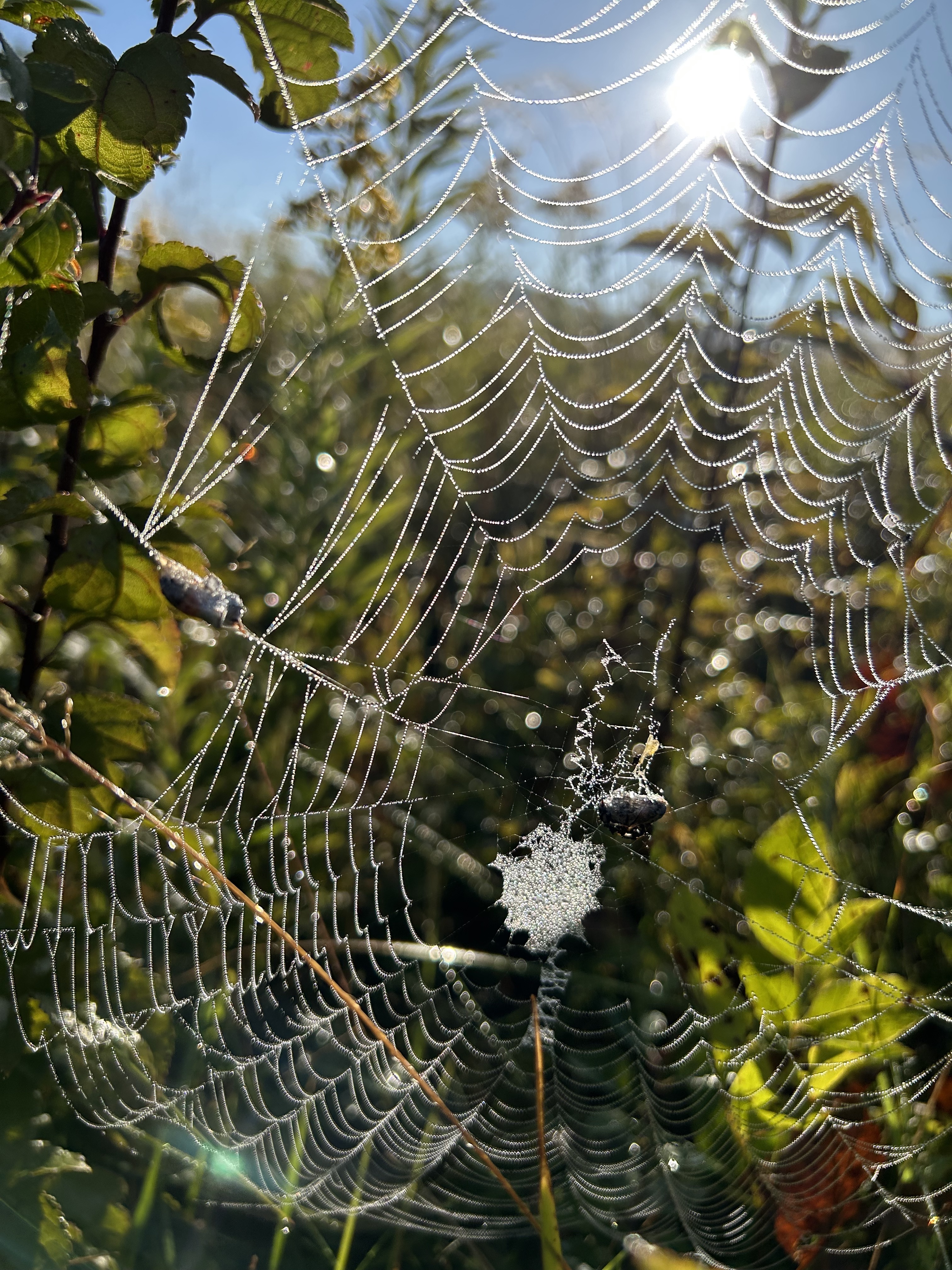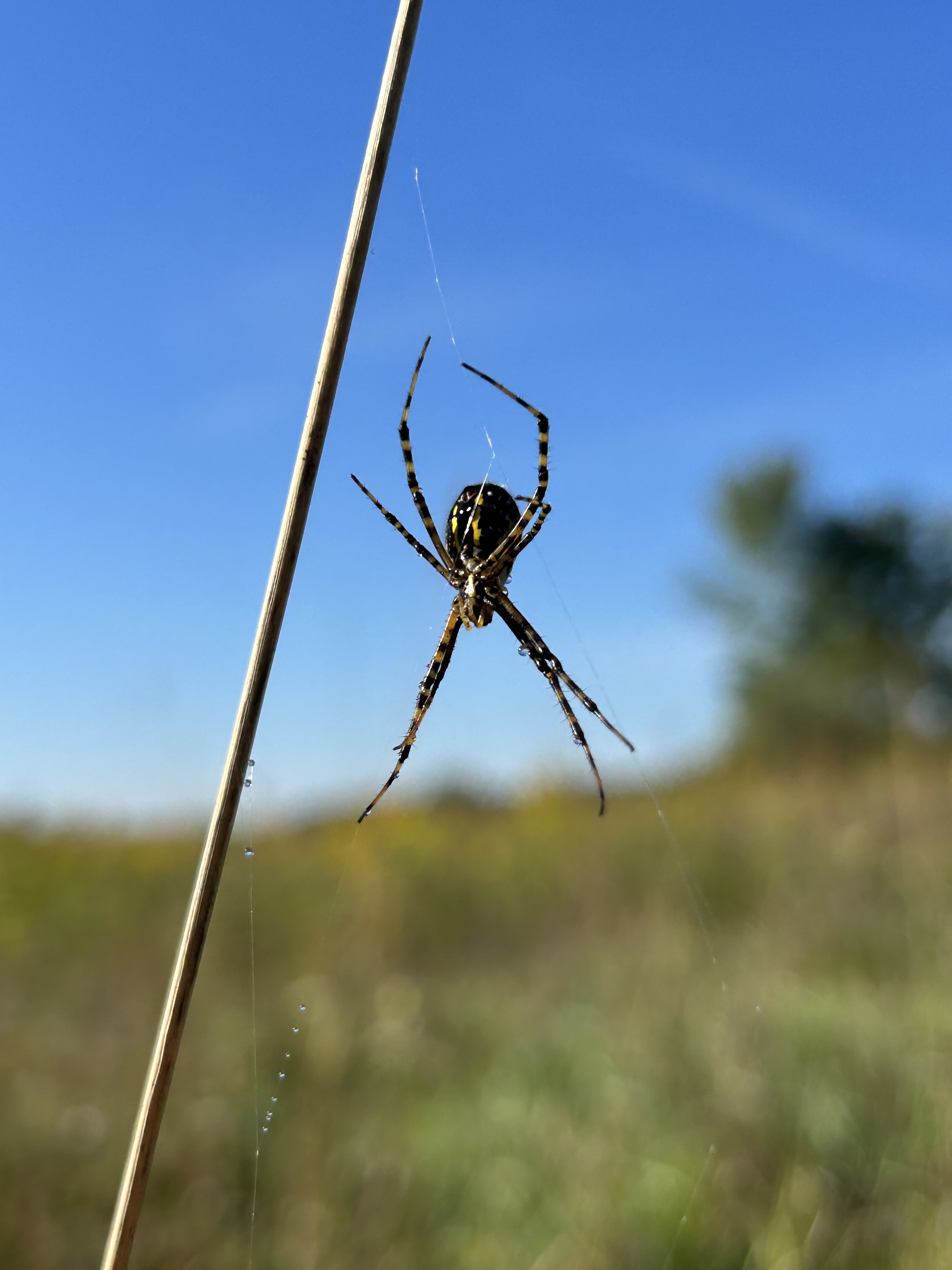Tiered Mentoring Program
Puncture Resistance of Spider Egg Sacs
Dr. Todd Blackledge and Kate Karkosiak
 Spiders' silk threads are known for their incredible mechanical properties and many potential applications. Spiders use silk not only for capturing and wrapping prey and building webs, but also for the important job of creating egg sacs to encase and protect their eggs during early development. These egg sacs consist of multiple types of spider silk wrapped around in a disorderly arrangement, like that of nonwoven materials. Spider egg sacs vary in their structure based on the species, leading to differences in shape, thickness, materials, and the pore structure of the fibrous material that could affect their ability to prevent predator attack.
Spiders' silk threads are known for their incredible mechanical properties and many potential applications. Spiders use silk not only for capturing and wrapping prey and building webs, but also for the important job of creating egg sacs to encase and protect their eggs during early development. These egg sacs consist of multiple types of spider silk wrapped around in a disorderly arrangement, like that of nonwoven materials. Spider egg sacs vary in their structure based on the species, leading to differences in shape, thickness, materials, and the pore structure of the fibrous material that could affect their ability to prevent predator attack.
One of the largest threats to developing spiders are parasitoid wasps. Parasitoid wasps puncture spider egg sacs with their long, sharp ovipositors and lay their eggs inside. The wasp offspring then develop inside of the protective egg sac and feed on spider eggs. In this project, we will perform puncture testing on various spider egg sacs to  assess their puncture resistance and compare this to the material fiber structure. We will use imaging techniques, such as three-dimensional confocal imaging to determine the thickness and porosity of different species egg sacs and scanning electron microscopy post-puncture to view the mode of puncture.
assess their puncture resistance and compare this to the material fiber structure. We will use imaging techniques, such as three-dimensional confocal imaging to determine the thickness and porosity of different species egg sacs and scanning electron microscopy post-puncture to view the mode of puncture.
Knowledge/Skills you will acquire:
- Scientific reading/writing
- Research and Data collection
- Materials science/testing
- Animal Care
- Spider Biology
- Imaging techniques
